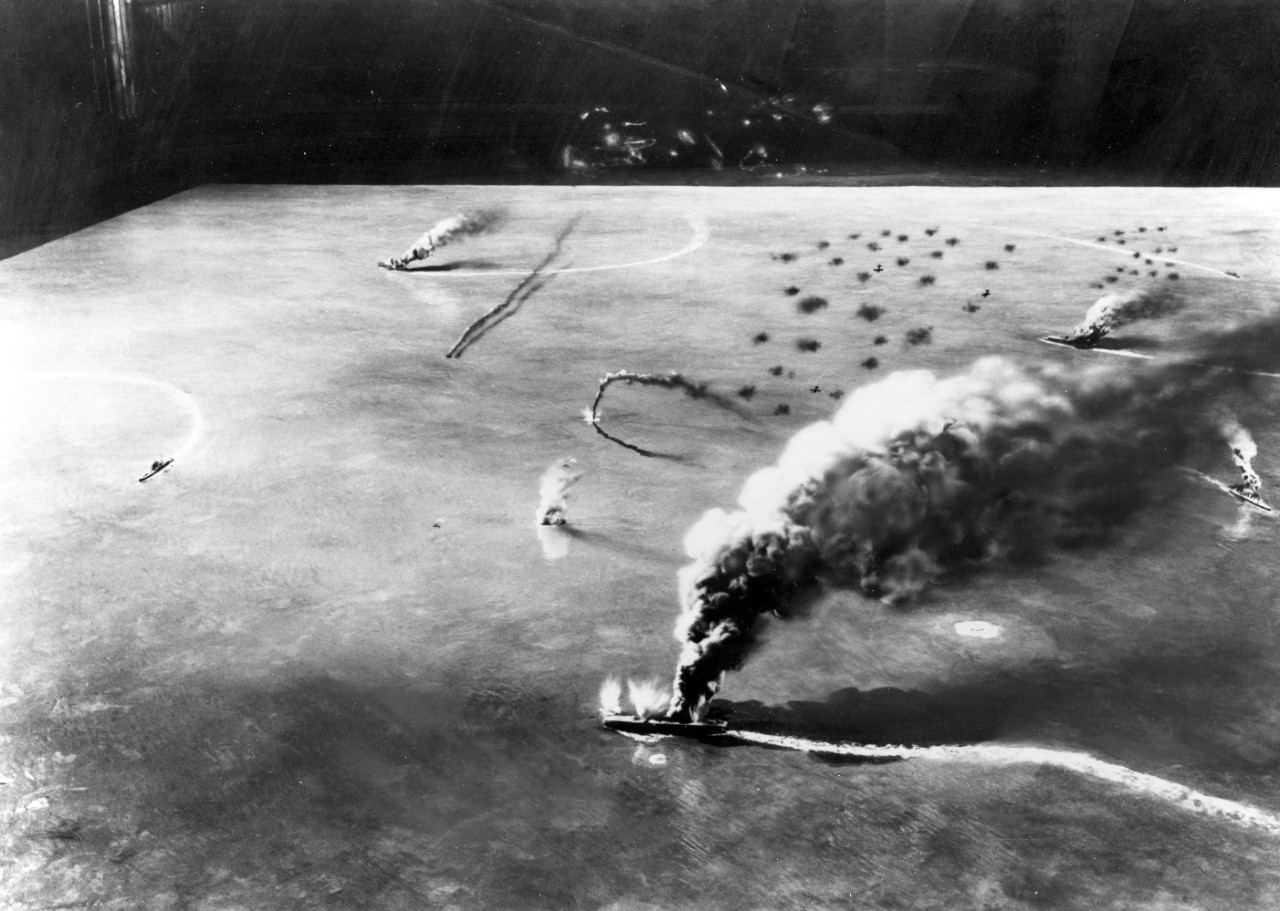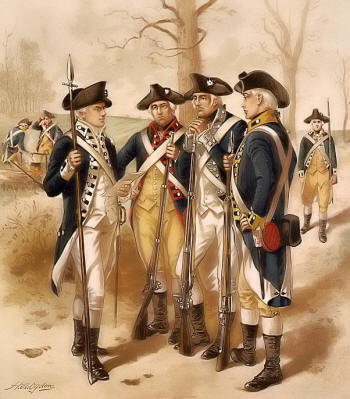Wednesday, November 26, 2008
Aisne
During the 2nd Battle of the Aisne in May 1917, General Charles Mangin, managed to capture a 4km stretch of the Chemin des Dames Ridge from the German Army. A year later, General Erich von Ludendorff, decided to try and win this territory back. On 27th May 1918, a 4,000 gun preliminary bombardment caused heavy casualties in Allied front-line trenches. A gas attack was followed by an infantry advance and by the evening the German Army had gained 15km and were at the River Vesle. The offensive continued and by 30th May, the Germans had captured 50,000 soldiers and 800 guns and were only 90km from Paris. Allied counter-attacks halted the advance by 6th June at the Marne. The French Army suffered 98,000 casualties, and the British Army lost 29,000.
Monday, November 17, 2008
Wilson's Creek
August 10, 1861just South of Springfield, Missouri. Brig. Gen. Nathaniel Lyon’s Army of the West was camped at Springfield, Missouri, with Confederate troops under the commands of Brig. Gen. Ben McCulloch approaching. On August 9, both sides formulated plans to attack the other. About 5:00 am on the 10th, Lyon, in two columns commanded by himself and Col. Franz Sigel, attacked the Confederates on Wilson’s Creek about 12 miles southwest of Springfield. Rebel cavalry received the first blow and fell back away from Bloody Hill. Confederate forces soon rushed up and stabilized their positions. The Confederates attacked the Union forces three times that day but failed to break through the Union line. Lyon was killed during the battle and Maj. Samuel D. Sturgis replaced him. Meanwhile, the Confederates had routed Sigel’s column, south of Skegg’s Branch. Following the third Confederate attack, which ended at 11:00 am, the Confederates withdrew. Sturgis realized, however, that his men were exhausted and his ammunition was low, so he ordered a retreat to Springfield. The Confederates were too disorganized and ill-equipped to pursue. This Confederate victory buoyed southern sympathizers in Missouri and served as a springboard for a bold thrust north that carried Price and his Missouri State Guard as far as Lexington. In late October, a rump convention, convened by Governor Claiborne Fox Jackson, met in Neosho and passed an ordinance of secession. Wilson’s Creek, the most significant 1861 battle in Missouri, gave the Confederates control of southwestern Missouri.At the end the Confederates did win the battle but they did not advance through Missouri though due to exhaustion and of limited supplies. Both sides paid a terrible price the US lost 1,235 while the CS lost 1,095 men. This battle was the Second major battle of the Civil War and the first major battle west of the Mississippi.
Friday, November 14, 2008
Zagonyi’s Charge

October 25, 1861Springfield, Missouri. Having accomplished little since taking command of the Western Department, with headquarters in St. Louis, Missouri, Maj. Gen. John C. Frémont formulated a plan to clear Maj. Gen. Sterling Price’s Rebels from the state and then, if possible, carry the war into Arkansas and Louisiana. Leaving St. Louis on October 7, 1861, Frémont’s combined force eventually numbered more than 20,000. His accompanying cavalry force, numbering 5,000 men and other mounted troops, included Maj. Frank J. White’s Prairie Scouts and Frémont's Body Guards under Maj. Charles Zagonyi. Maj. White became ill and turned his command over to Zagonyi. These two units operated in front of Frémont’s army to gather intelligence. As Frémont neared Springfield, the local state guard commander, Col. Julian Frazier, sent out requests to nearby localities for additional troops. Frémont camped on the Pomme de Terre River, about 50 miles from Springfield. Zagonyi’s column, though, continued on to Springfield, and Frazier’s force of 1,000 to 1,500 prepared to meet it. Frazier set up an ambush along the road that Zagonyi travelled, but the Union force charged the Rebels, sending them fleeing. Zagonyi’s men continued into town, hailed Federal sympathizers and released Union prisoners. Leery of a Confederate counterattack, Zagonyi departed Springfield before night, but Frémont’s army returned, in force, a few days later and set up camp in the town. In mid-November, after Frémont was sacked and replaced by Maj. Gen. Hunter, the Federals evacuated Springfield and withdrew to Sedalia and Rolla. Federal troops reoccupied Springfield in early 1862 and it was a Union stronghold from then on. This engagement at Springfield was the only Union victory in southwestern Missouri in 1861.At the end the Union won the battle with a total of 218 dead. U.S. lost 85 and the C.S. lost 133.
(Information from CWSAC Battle Summaries)
Tuesday, November 11, 2008
Happy Veterans Day
Sunday, November 9, 2008
Battle of Midway
 June 4-7, 1942
June 4-7, 1942The Battle of Midway was a major naval battle, widely regarded as the most important one of the Pacific Campaign of World War 2. It was a battle against the United States and The Empire of Japan. In the beginning of the battle the U.S. had 3 carriers, 50 support ships, 233 carrier aircraft, and 127 land-based aircraft. Japan had 4 carriers, 7 battleships, 150 support ships, 264 carrier aircraft,and 16 float planes. The battle has often been called "the turning point of the Pacific". The victory at Midway first blunted Japan's strategic initiative, inflicted irreparable damage on the Japanese carrier force, and shortened the war in the Pacific. At the end the United States lost 1 carrier, 1 destroyer, 98 aircraft, and lost 307 lives. Finally the Japanese lost 4 carriers, 1 cruiser, 332 carrier aircraft, and 3500 were killed. This was truly a big turning point in the Pacific theater. At the end the United States won the battle. With big costs on both sides.
Something New

I know I haven't been doing much on my blogs but that is because I haven't had much to say. So for every week I will try and talk about a battle during the Civil War, World War I, or of World War II. I hope you will get some information out of these. If you ever want me to find out about a certain battle then just tell me on my blog and I will try to get to it. Thanks.
Tuesday, July 29, 2008
Fort Davidson State Historic Site

THE BATTLE OF PILOT KNOB!!
In the fall of 1864 Confederate armies east of the Mississippi River under command of Maj. Gen. Sterling Price, one of Missouri's most famous Confederate, to lead the raid. Price's goals were to divert Union troops from east of the Mississippi River, gather Confederate recruits, capture and destroy Union war materials and, of at all possible, capture St. Louis or Jefferson City. Price entered Missouri on September 19, 1864, with an army of 12,000 men heading for St. Louis. This was the largest Confederate calvary raid of the war. While en route to the St. Louis area, Price decided to attack the weakly defended post of Fort Davidson at Pilot Knob. Fort Davidson was a small hexagonal earthwork fort defended by Gen. Thomas Ewing Jr. and his 1,450 Union soldiers. It would be one of Price's most fatal mistakes.At the end of the battle the Confederates paid a heavy price during the Battle of Pilot Knob. As many as 1,000 troops were killed or wounded, and more importantly, Gen. Price no longer posed a threat to St. Louis. The Union force suffered 200 casualties, with 28 killed. Price continued his advance into Missouri following the battle. Eventually, he encountered two Union armies at the battle of Westport, near Kansas City. It was there, in the largest battle fought west of the Mississippi River, where he was defeated and forced to return to Confederate Arkansas.
If you wish to know more about this battle just log on to www.mostateparks.com
Subscribe to:
Comments (Atom)

